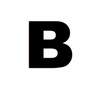Bobby Gillespie of Primal Scream, 1985. Photo: David Evans
Sam Knee: The concept for this book had been mulling in my imagination for years, decades even. Pre-A Scene In Between there were a few style tribe or scene history books circulating that I found infuriating. They all skipped through the 80s, only touching on the obvious, painting an inaccurate, simplistic, dumbed down picture. You know, the usual: Punk rock, then 2-Tone, then tip-toeing through mentioning The Smiths, then “Phew it’s ‘88 and the safe terrain of E and baggy!” They were just so depressingly ordinary.
It’s ironic really… I always hated the word “indie” and a lot of the music that became known as indie. The independent music scene that emerged from strands of post-punk felt in its oddness like the only place I could belong. The other scenes were far too regimented and rock leaning in attitude and style, I loved the inclusivity of the indie scene.
Stephen Pastel of The Pastels in 1981. Photo: John McCorkindale, courtesy of A Scene In Between
I loved the early 60s British art school CND protestor look, which some people (Stephen Pastel [of The Pastels] in particular) managed to convey. It's quite anarchic yet understated: lots of pin badges on a duffle coat over a cable knit cardigan, paired with desert boots, corduroy slacks or jeans and a nondescript schoolboy haircut. You’d be surprised how some people would react to it during the 80s. They couldn't comprehend the unflashy normalness. It made some people – normally football casual thicko, yobbo, lager types – actually quite violent!It's a hard look to pin down because originally most people on the scene bought clothes from charity shops and flea markets. There was always an element of one-offness. Charity shops then were busting with 50s and 60s castoffs, so it was easy and cheap to dress virtually head to toe in authentic period gear, but without consciously planning or projecting it too militantly like the suffocatingly uptight mod scene. The indie kids were far more ramshackle. Wearing old clothes then was a rejection of, or a withdrawal from, contemporary dross society and all of its gaudy trappings.
The Smiths in 1983 At the Moles Club, Bath. Photo: Martin Whitehead
The 80s saw the rise of the provincial punk. Crass forged the path forward away from the metropolitan mindset. London in particular played a far lesser role for the 80s indie guitar scene. It had heaps of great indie record shops and small venues, but very few of those bands were actually from there. Central London became a gated community for smug suckers only. How crucial to the various UK scenes of the 80s were their accompanying fashion cultures?
They were paramount, completely intertwined [with the music]. One couldn't exist without the other. Some subcultures would deny this, saying that style was trivial or that they were “anti-fashion”, for example anarcho-punks and a lot of indie student types. I always found that absurd when they clearly projected almost uniform looks synonymous within their movements.Do you revel in seeing hints of the scene's influences around today?
I do see elements of the “Ye Olde indie look” around adorning the youth of today, but it’s a normally more of a mix-up of post-punk, indie, college rock and slacker, squeezed through a keyhole together. I don’t ever see youths wearing 60s children’s anoraks with black leather trousers and mop hairdos, that look is terminally 1985-88 and is probably too neurotic and subversively elitist to really take off nowadays.
No, I'm glad it's never transcended into mainstream culture. I doubt it ever will. It's not nearly macho or laddy enough to appeal to the average mundane meathead on the street.
Rose McDowell and Jill Bryson of Strawberry Switchblade, 1982. Photo: Peter McArthur
The Vaselines in 1987. Photo: Stephen McRobbie
Stephen Pastel, Alasdair (driver), The Legend (Everett True) and David Keegan in 1985, outside Rough Trade on Talbot Road, Notting Hill. Photo: Courtesy Stephen McRobbie
The Clouds in 1987. Photo: Martin Whitehead
1981 Pop Art acid mods, the Onlookers, playing in Windsor on the day of the royal wedding of Charles and Diana. Photo: Debra Leech
Johnny Marr of the Smiths, 1985. Live at Portsmouth Guildhall. Photo: Mitsue Kakuta
